The First Imaging Camera for Time-Domain and Frequency-Domain Generation Systems
Terahertz time-domain spectroscopy is a spectroscopic technique in which the properties of a material are probed with short pulses of terahertz radiation. The generation and detection scheme is sensitive to the sample material's effect on both the amplitude and the phase of the terahertz radiation. Pulsed terahertz radiation is generated by photoconductive switches (GaAs or InGaAs/InP) irradiated by femtosecond lasers. At the end, a fact Fourier transform of terahertz amplitude produces the terahertz spectrum in the frequency range 0.1 – 5 THz. 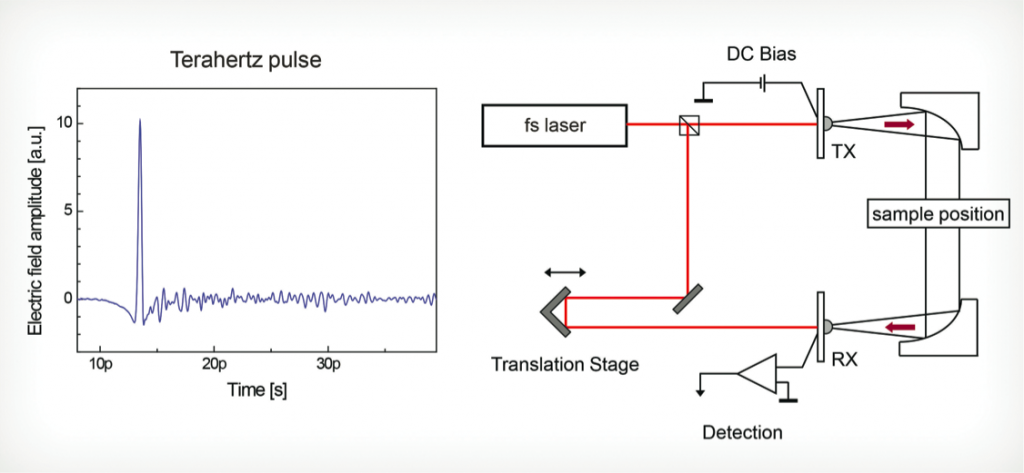 Terahertz frequency-domain spectroscopy is a spectroscopic technique in which the properties of a material are probed with continuous-wave (cw) terahertz radiation. The radiation is obtained by optical heterodyning in high-bandwidth photoconductors: the output of two cw lasers converts into terahertz radiation, exactly at the difference frequency of the lasers. The photomixer is represented by a microscopic metal-semiconductor-metal structure. Applying a bias voltage to the semiconductor structure then generates a photocurrent that oscillates at the beat frequency. The output frequency spans from 50 GHz up to 1.5 THz.
Terahertz frequency-domain spectroscopy is a spectroscopic technique in which the properties of a material are probed with continuous-wave (cw) terahertz radiation. The radiation is obtained by optical heterodyning in high-bandwidth photoconductors: the output of two cw lasers converts into terahertz radiation, exactly at the difference frequency of the lasers. The photomixer is represented by a microscopic metal-semiconductor-metal structure. Applying a bias voltage to the semiconductor structure then generates a photocurrent that oscillates at the beat frequency. The output frequency spans from 50 GHz up to 1.5 THz. 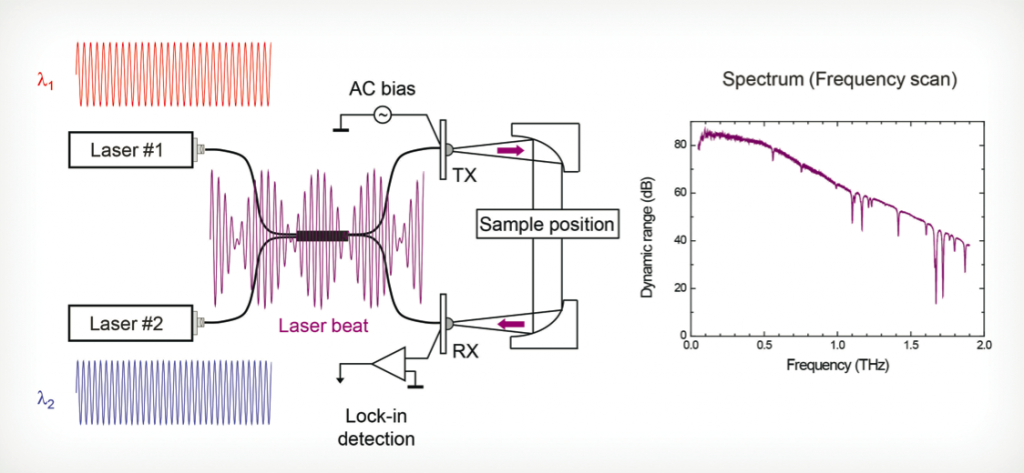
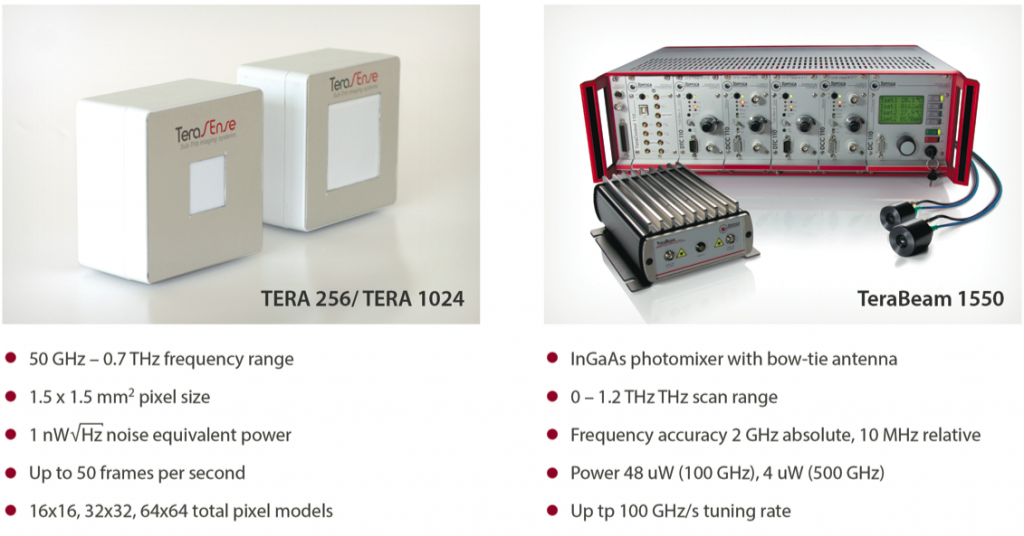
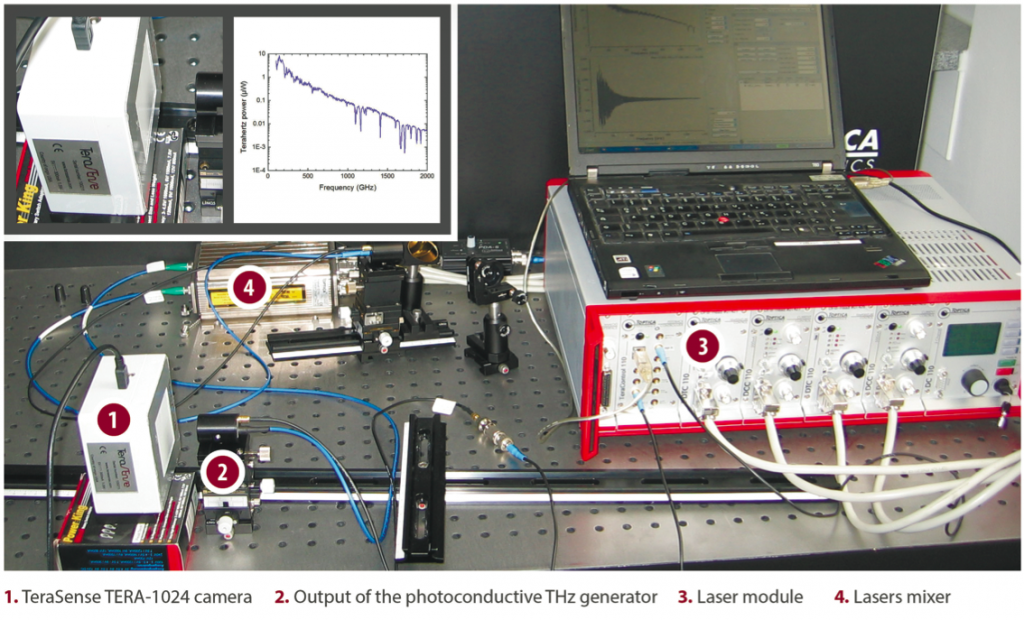

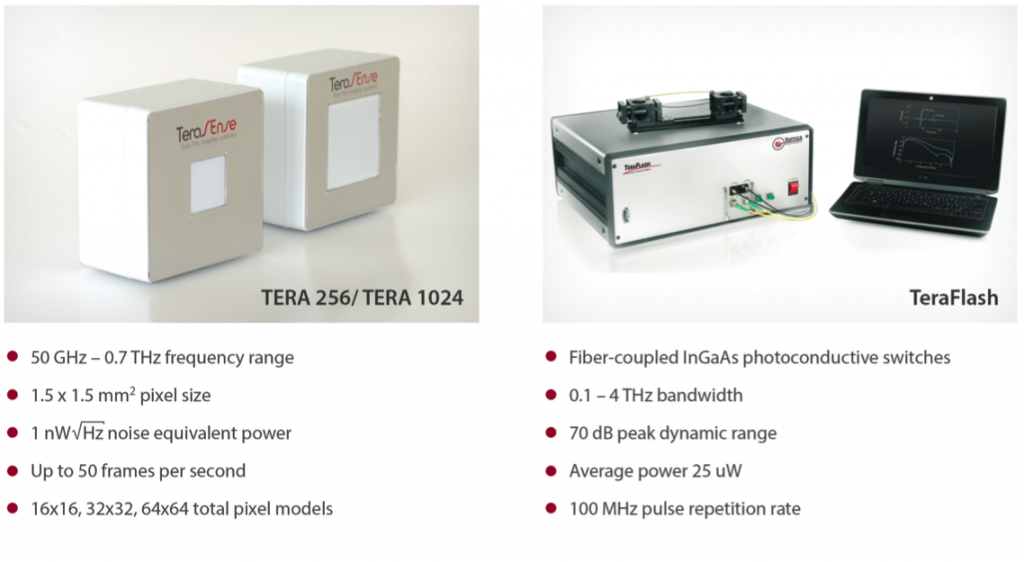
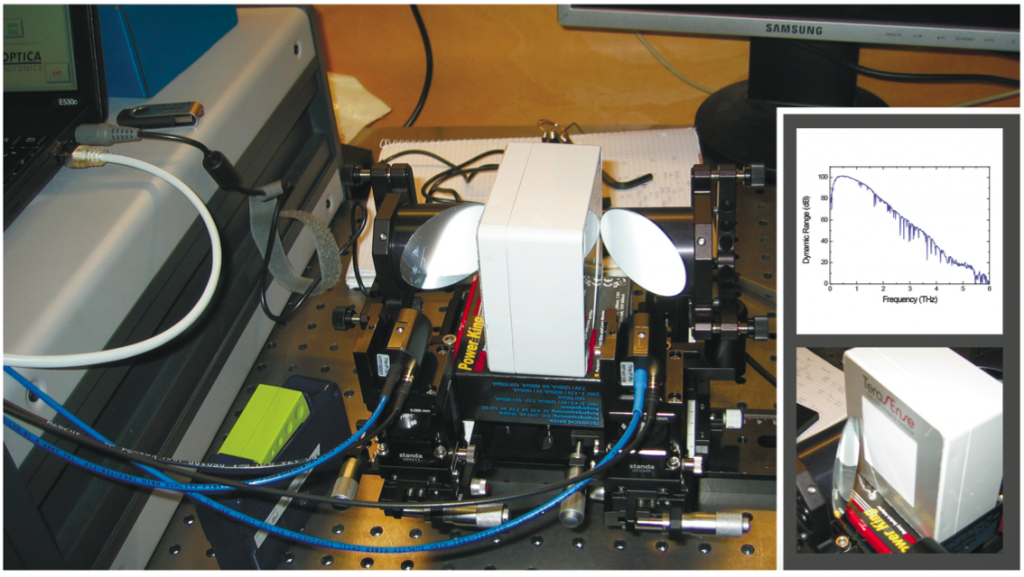
 Valuable scientific achievements were obtained jointly by TERASENSE and TOPTICA researchers in the course of our R&D project followed by technical meeting held at TOPTICA's headquarters at Munich, March TERASENSE highly appreciates the efforts made by Dr. Anselm Deninger, TOPTICA Product Manager in creating friendly environment for the meeting. The contribution made by Mr. Wolfgang Gruber, SEMIC RF Electronic GmbH in arrangement and making it all happen can hardly be overestimated and deserve special thanks. We are absolutely confident, the results obtained in the course of this mutually enriching collaboration mark the advent of an entirely new era in the development of TDS and FDS systems - now reinforced with TERASENSE imagers.
Valuable scientific achievements were obtained jointly by TERASENSE and TOPTICA researchers in the course of our R&D project followed by technical meeting held at TOPTICA's headquarters at Munich, March TERASENSE highly appreciates the efforts made by Dr. Anselm Deninger, TOPTICA Product Manager in creating friendly environment for the meeting. The contribution made by Mr. Wolfgang Gruber, SEMIC RF Electronic GmbH in arrangement and making it all happen can hardly be overestimated and deserve special thanks. We are absolutely confident, the results obtained in the course of this mutually enriching collaboration mark the advent of an entirely new era in the development of TDS and FDS systems - now reinforced with TERASENSE imagers. 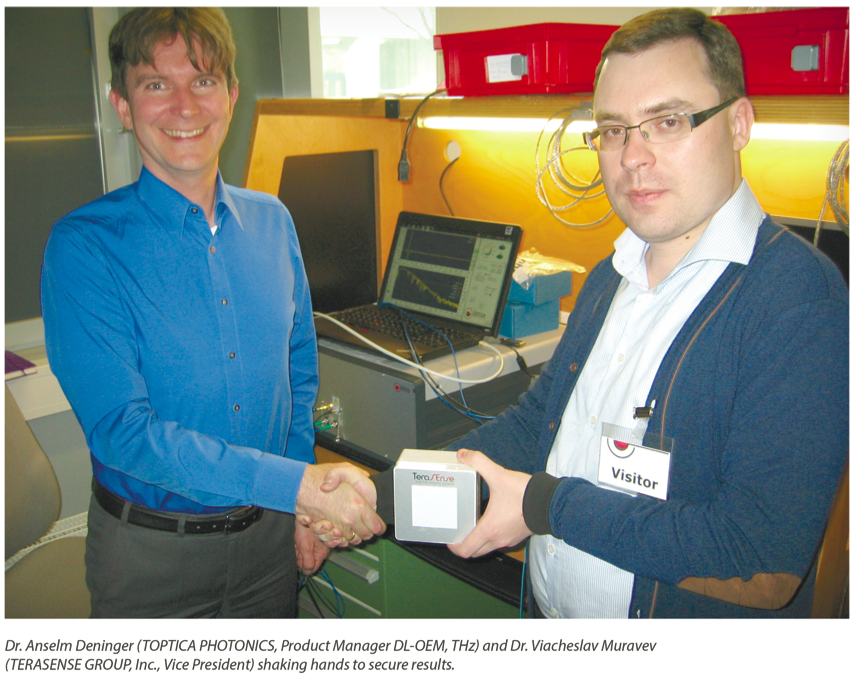
 Terahertz frequency-domain spectroscopy is a spectroscopic technique in which the properties of a material are probed with continuous-wave (cw) terahertz radiation. The radiation is obtained by optical heterodyning in high-bandwidth photoconductors: the output of two cw lasers converts into terahertz radiation, exactly at the difference frequency of the lasers. The photomixer is represented by a microscopic metal-semiconductor-metal structure. Applying a bias voltage to the semiconductor structure then generates a photocurrent that oscillates at the beat frequency. The output frequency spans from 50 GHz up to 1.5 THz.
Terahertz frequency-domain spectroscopy is a spectroscopic technique in which the properties of a material are probed with continuous-wave (cw) terahertz radiation. The radiation is obtained by optical heterodyning in high-bandwidth photoconductors: the output of two cw lasers converts into terahertz radiation, exactly at the difference frequency of the lasers. The photomixer is represented by a microscopic metal-semiconductor-metal structure. Applying a bias voltage to the semiconductor structure then generates a photocurrent that oscillates at the beat frequency. The output frequency spans from 50 GHz up to 1.5 THz. 





 Valuable scientific achievements were obtained jointly by TERASENSE and TOPTICA researchers in the course of our R&D project followed by technical meeting held at TOPTICA's headquarters at Munich, March TERASENSE highly appreciates the efforts made by Dr. Anselm Deninger, TOPTICA Product Manager in creating friendly environment for the meeting. The contribution made by Mr. Wolfgang Gruber, SEMIC RF Electronic GmbH in arrangement and making it all happen can hardly be overestimated and deserve special thanks. We are absolutely confident, the results obtained in the course of this mutually enriching collaboration mark the advent of an entirely new era in the development of TDS and FDS systems - now reinforced with TERASENSE imagers.
Valuable scientific achievements were obtained jointly by TERASENSE and TOPTICA researchers in the course of our R&D project followed by technical meeting held at TOPTICA's headquarters at Munich, March TERASENSE highly appreciates the efforts made by Dr. Anselm Deninger, TOPTICA Product Manager in creating friendly environment for the meeting. The contribution made by Mr. Wolfgang Gruber, SEMIC RF Electronic GmbH in arrangement and making it all happen can hardly be overestimated and deserve special thanks. We are absolutely confident, the results obtained in the course of this mutually enriching collaboration mark the advent of an entirely new era in the development of TDS and FDS systems - now reinforced with TERASENSE imagers. 